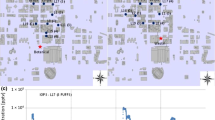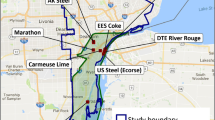Abstract
Following the collapse of the New York World Trade Center (WTC) towers on September 11, 2001, Local, State, and Federal agencies initiated numerous air monitoring activities to better understand the ongoing impacts of emissions from the disaster. The collapse of the World Trade Center towers and associated fires that lasted for several weeks resulted at times in a noticeable plume of material that was dispersed around the Metropolitan New York City (NYC) area. In general, the plume was only noticeable for a short period of time following September 11, and only apparent close to the World Trade Center site. A study of the estimated pathway which the plume of WTC material would likely follow was completed to support the United States Environmental Protection Agency’s 2002 initial exposure assessments. In this study, the WTC emissions were simulated using the CALMET-CALPUFF model in order to examine the general spatial and temporal dispersion patterns over NYC. This paper presents the results of the CALPUFF plume model in terms of plume dilution and location, since the exact source strength remains unknown. Independent observations of PM2.5 are used to support the general dispersion features calculated by the model. Results indicate that the simulated plume matched well with an abnormal increase (600–1000% of normal) in PM2.5 two nights after the WTC collapse as the plume rotated north to southeast, towards parts of NYC. Very little if any evidence of the plume signature was noted during a similar flow scenario a week after September 11. This leads to the conclusion that other than areas within a few kilometers from the WTC site, the PM2.5 plume was not observable over NYC’s background concentration after the first few days.
Similar content being viewed by others
Author information
Authors and Affiliations
Rights and permissions
About this article
Cite this article
Gilliam, R.C., Huber, A.H. & Raman, S. Metropolitan-scale Transport and Dispersion from the New York World Trade Center Following September 11, 2001. Part II: An Application of the CALPUFF Plume Model. Pure appl. geophys. 162, 2005–2028 (2005). https://doi.org/10.1007/s00024-005-2702-y
Received:
Accepted:
Published:
Issue Date:
DOI: https://doi.org/10.1007/s00024-005-2702-y




